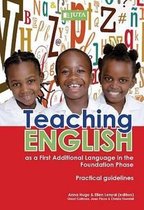TMN3701 Assignment
3 (COMPLETE
ANSWERS) 2024
(781296) - 28 June
2024; 100% TRUSTED
workings,
explanations and
solutions.
ADMIN
[COMPANY NAME]
,QUESTION 1 1.1 Explain the significant role of input, interaction and
output in the context of additional language teaching. Provide examples
to support your answer. (10) 1.2 Highlight the potential challenges
teachers might face when implementing input, interaction and output in
the classroom and provide strategies to overcome these challenges. (10)
(20)
1.1 Significant Role of Input, Interaction, and Output in Additional
Language Teaching
Input
Input refers to the language exposure that learners receive, which is
essential for language acquisition. The more comprehensible input
learners are exposed to, the better their language skills develop. This is
grounded in Stephen Krashen's Input Hypothesis, which posits that
learners acquire language by understanding input that is slightly beyond
their current level of competence (i+1).
Examples:
• Listening to native speakers: By listening to conversations,
podcasts, or watching movies in the target language, learners get a
sense of natural language usage, pronunciation, and intonation.
• Reading authentic materials: Engaging with books, articles, or
online content in the target language helps learners acquire new
vocabulary and grammatical structures in context.
Interaction
Interaction involves the use of the target language in communicative
activities. According to Michael Long's Interaction Hypothesis,
interaction facilitates language acquisition as it provides opportunities
for learners to produce language, receive feedback, and negotiate
meaning.
Examples:
, • Group discussions: Engaging in discussions or debates with peers
in the target language encourages learners to practice speaking and
listening skills.
• Role-playing activities: Simulating real-life scenarios, such as
ordering food at a restaurant or asking for directions, helps learners
practice practical language use.
Output
Output refers to the language that learners produce, either spoken or
written. Merrill Swain's Output Hypothesis suggests that producing
language (output) helps learners test their hypotheses about the language
and refine their language skills through practice and feedback.
Examples:
• Writing essays or reports: Composing written texts in the target
language enhances grammatical accuracy and the ability to
organize ideas coherently.
• Presentations: Giving oral presentations in the target language
helps improve fluency, pronunciation, and public speaking skills.
1.2 Challenges and Strategies in Implementing Input, Interaction,
and Output
Challenges
1. Limited exposure to authentic input:
o Challenge: In a non-native environment, learners may have
limited access to authentic language input.
o Strategy: Teachers can incorporate multimedia resources
such as videos, podcasts, and online articles to provide
diverse and rich input.
2. Student reluctance to participate in interaction:
o Challenge: Some learners may feel shy or anxious about
speaking in front of others.





